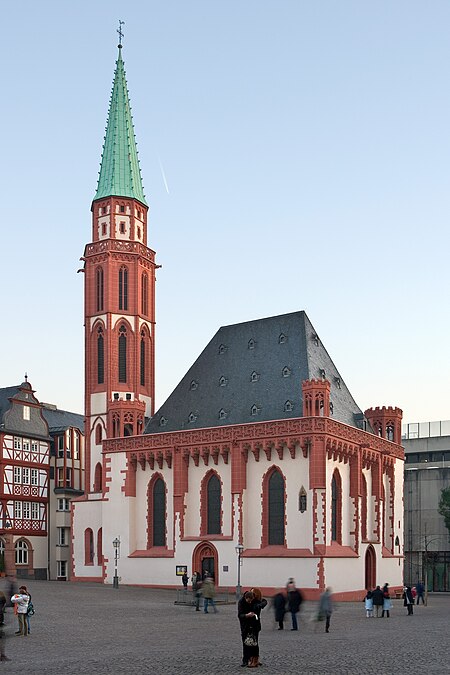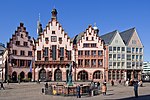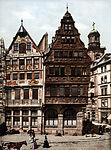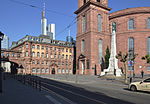Old St Nicholas Church

The Old St Nicholas Church (in German: Alte Nikolaikirche) in Frankfurt, Germany, is a medieval Lutheran church. It is located near the Römer city hall in Frankfurt's old town called Altstadt. It has 51 bells; 4 are used for peals and 47 are used for carillons. The first chapel on its site was built in the mid-12th century, the current in the mid-15th. Its congregation forms part of today's Protestant Church in Hesse and Nassau, comprising Lutheran, Reformed and United Protestant congregations. Despite major destruction in the surrounding old town owing to the bombing of Frankfurt am Main in World War II, the Old St Nicholas Church had only minor damage. Nearby, the Dom-Römer Project aims to bring back parts of the old town between the Römerberg square and Frankfurt Cathedral.
Excerpt from the Wikipedia article Old St Nicholas Church (License: CC BY-SA 3.0, Authors, Images).Old St Nicholas Church
Saalgasse, Frankfurt Altstadt (Innenstadt 1)
Geographical coordinates (GPS) Address External links Nearby Places Show on map
Geographical coordinates (GPS)
| Latitude | Longitude |
|---|---|
| N 50.11 ° | E 8.6822222222222 ° |
Address
Nikolaikirche
Saalgasse
60311 Frankfurt, Altstadt (Innenstadt 1, Innenstadt)
Hesse, Germany
Open on Google Maps











